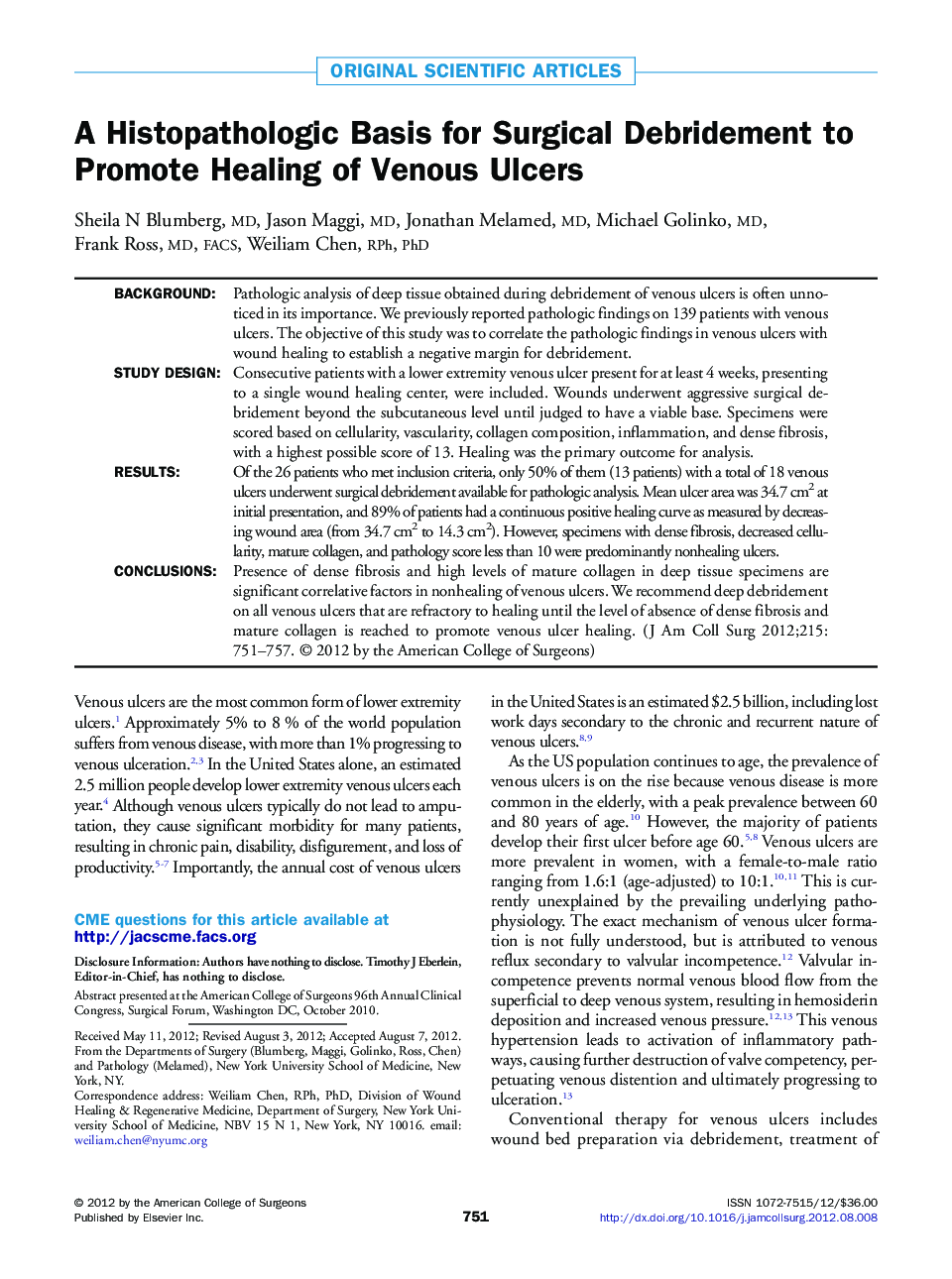| کد مقاله | کد نشریه | سال انتشار | مقاله انگلیسی | نسخه تمام متن |
|---|---|---|---|---|
| 4293177 | 1612252 | 2012 | 7 صفحه PDF | دانلود رایگان |

BackgroundPathologic analysis of deep tissue obtained during debridement of venous ulcers is often unnoticed in its importance. We previously reported pathologic findings on 139 patients with venous ulcers. The objective of this study was to correlate the pathologic findings in venous ulcers with wound healing to establish a negative margin for debridement.Study DesignConsecutive patients with a lower extremity venous ulcer present for at least 4 weeks, presenting to a single wound healing center, were included. Wounds underwent aggressive surgical debridement beyond the subcutaneous level until judged to have a viable base. Specimens were scored based on cellularity, vascularity, collagen composition, inflammation, and dense fibrosis, with a highest possible score of 13. Healing was the primary outcome for analysis.ResultsOf the 26 patients who met inclusion criteria, only 50% of them (13 patients) with a total of 18 venous ulcers underwent surgical debridement available for pathologic analysis. Mean ulcer area was 34.7 cm2 at initial presentation, and 89% of patients had a continuous positive healing curve as measured by decreasing wound area (from 34.7 cm2 to 14.3 cm2). However, specimens with dense fibrosis, decreased cellularity, mature collagen, and pathology score less than 10 were predominantly nonhealing ulcers.ConclusionsPresence of dense fibrosis and high levels of mature collagen in deep tissue specimens are significant correlative factors in nonhealing of venous ulcers. We recommend deep debridement on all venous ulcers that are refractory to healing until the level of absence of dense fibrosis and mature collagen is reached to promote venous ulcer healing.
Journal: Journal of the American College of Surgeons - Volume 215, Issue 6, December 2012, Pages 751–757